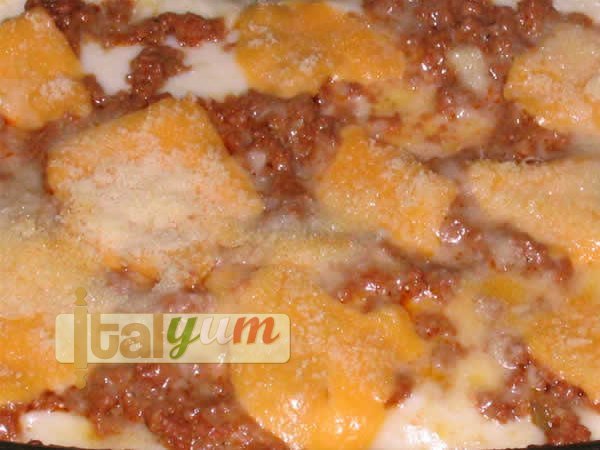
Lasagne recipe
Lasagne my wayIt’s probably the second best known Italian dish after spaghetti. This dish is not the same throughout Italy because it is influenced by each regional cooking style. So, if you are having lasagne in north Italy, it will have less tomato sauce (or no tomato sauce at all) than a lasagne prepared in south Italy where they use more tomatoes, and many other differences that I am not going to write about just now. Also, lasagne can be prepared with a variety of sauces to accommodate any taste or need (i.e. vegetarian lasagne). My recipe is very simple and it is made according to my family tradition; it’s a “no tomato” recipe (with the exception that I use a bit of tomato puree as enhancer when preparing the ragù sauce) that totally relies on a good ragù sauce. Now, as I said above THIS IS MY FAMILY recipe; my mum has always added extra cheese (Emmental or processed) rather than only Parmesan cheese. However, If you want to make the traditional lasagne al forno, then use only bechamel and Parmesan to top the pasta layers (with a few tiny knobs of butter to top the final layer) and for the ragù, use the Bolognese ragù I describe in the meat section of the website. Note: about the ragù and bechamel sauces, the quantities I have given are approximate and you should use them according to your taste. Usually, when I prepare this recipe, I always use all the ragù sauce while I always have some bechamel sauce left because too much bechamel could make the lasagne too rich. Another important trick is that both the ragù and bechamel should be a bit more liquid than for other recipes because this help to keep the lasagne sheets moistened.
Equip your kitchen – Available at Amazon now
Clicking on equipment pictures takes you to Amazon where you can buy the items. We get a small revenue share of anything you buy which helps keep the site running.
Ingredients
- 12 Lasagne sheets (approx. 3 per person)
- 450 grams (1 lb) Ragù sauce (see my note below) The “ragù sauce” recipe (Bolognese ragù) is featured in the meat section of the website.
- 600 ml (1 pint) Bechamel sauce (see my note below) The “bechamel sauce” recipe is featured in the top tips of the website.
- Freshly grated Parmesan cheese
- Butter
OPTIONAL:
- A few slices of Emmental cheese (alternatively use processed cheese)
Instructions
- Take a big pan, 3/4 full of water, bring the water to the boil, add about 10 g (1/3 ounce) of salt per litre (4 1/8 cups) of water and finally add few drops of olive oil (the oil helps the lasagne sheets not to stick together).

- When the water is boiling, put the lasagne sheets into the pan and boil them for the required time. If the pan is very big, you can put the lasagne sheets all together, otherwise better to boil them 4 by 4.

- Despite the fact that you can find lasagne sheets that do not require any boiling (you put them straightaway in the oven), I always prefer to buy lasagne sheets that required to be boiled first (it's just a personal choice – nothing more, nothing less).

- Once the lasagne sheets are boiled, separate and lay them on a wet kitchen towel.

- Take the oven tray and brush the bottom with melted butter.
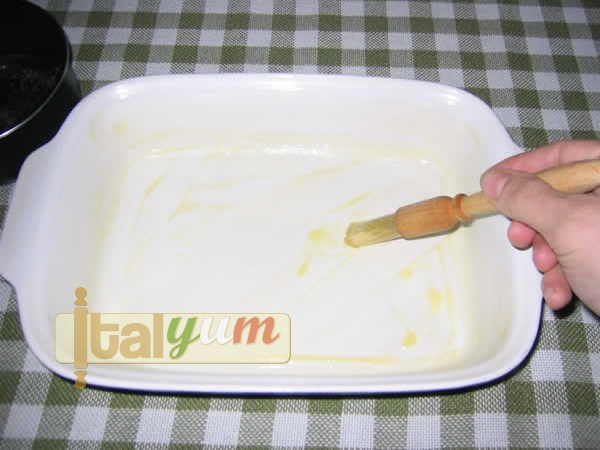
- The first stage is preparation of the bottom. After having brushed the bottom with butter, I usually start spreading some ragù sauce with few drops of bechamel sauce.
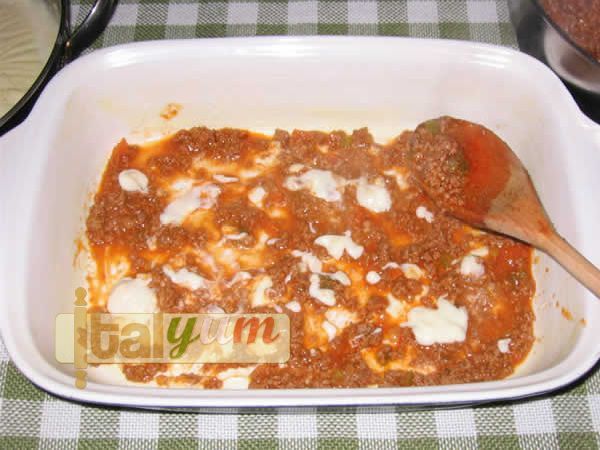
- Then, I lay the first 3 lasagne sheets (first layer) and cover them with bechamel sauce.
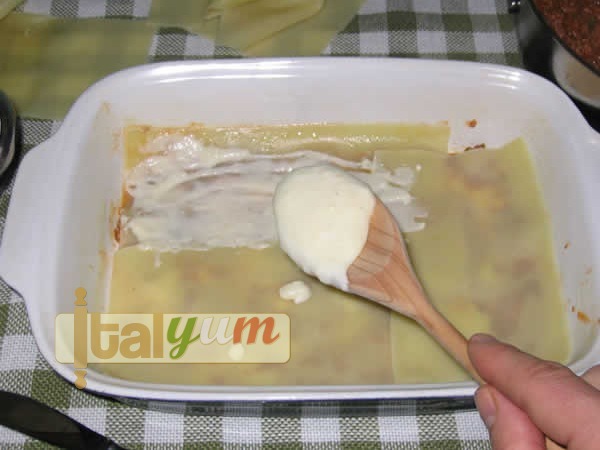
- Now, add few spoons of ragù sauce.
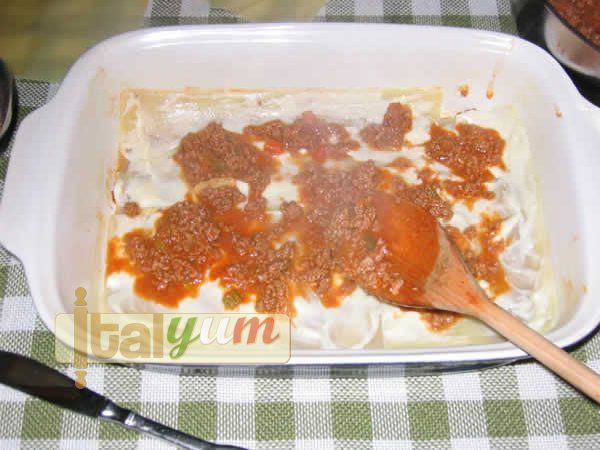
- Spread the ragù sauce around.

- To complete the first layer, sprinkle with Parmesan cheese.
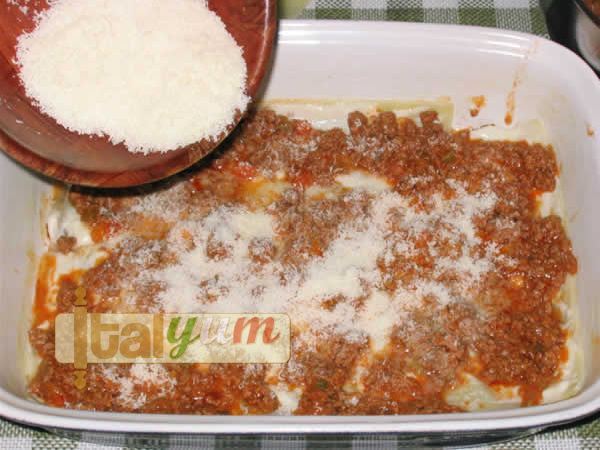
- Now, we prepare the second layer. Lay other 3 lasagne sheets (lasagne sheets 4,5 and 6), and spread with bechamel sauce.
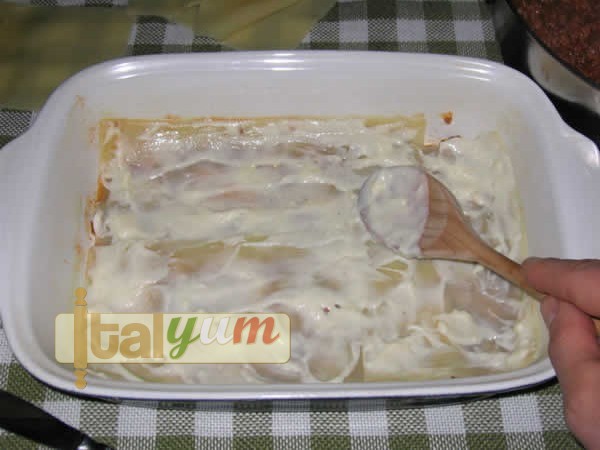
- Few spoons of ragù sauce.
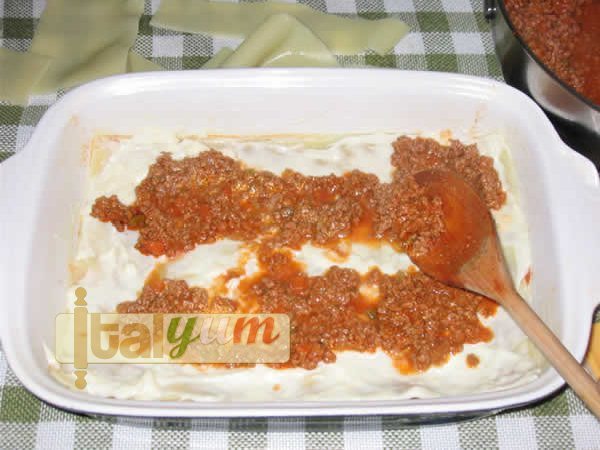
- Spread the ragù sauce around.
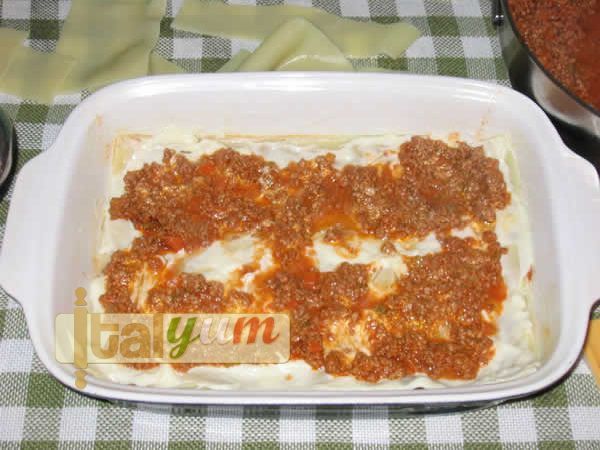
- Now, we add a bit of variation! Take a couple of cheese slices and break them over.

- Like this.
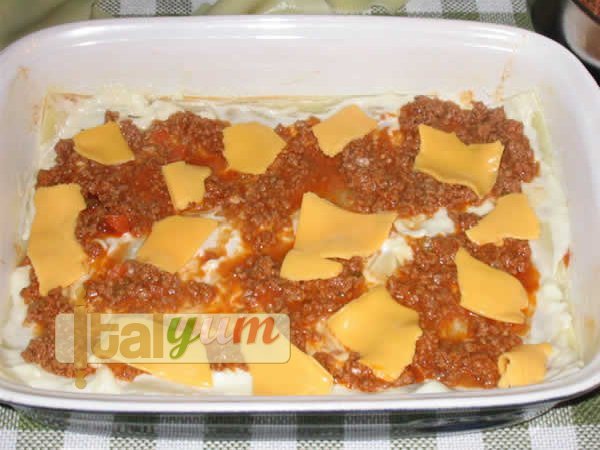
- Complete the second layer with a sprinkle of Parmesan cheese.Now, prepare the third layer (lasagne sheets 7, 8 and 9) in the same way as the second layer without adding any cheese slices, but remember to sprinkle with Parmesan cheese. After that, we will pass to the final stage: the top layer.
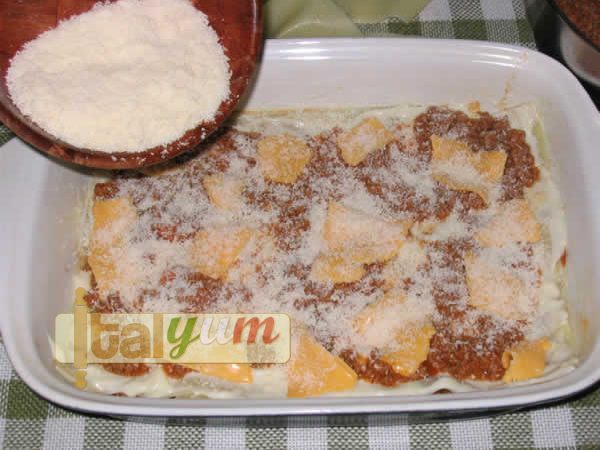
- Finally, cover with the last 3 lasagne sheets (lasagne sheets 10, 11 and 12). Cover them with a bit more bechamel than you did for the previous layers. Add few spoons of ragù sauce, but less than you used for the previous layers.
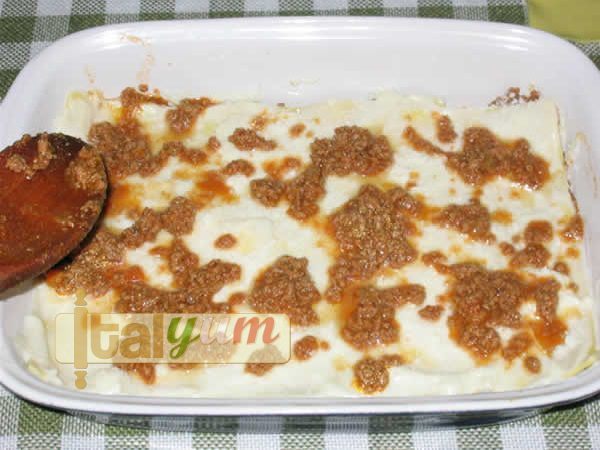
- Break the two remaining cheese slices over the top and sprinkle with Parmesan cheese.

- This is the final tray ready for the oven or ready to be frozen.

- Put the tray in the oven at 180ºC (355°F) for about 30-40 minutes or untill it is sizzling and the top layer starts browning. On the top of this you can also add three or four small knobs of butter, just to give the final finish.You could have also prepared the lasagne tray before and put it in the freezer. If you have done that, take the tray out of the freezer the night before and transfer it in the fridge. The following day it should be defrosted and ready for the oven. Usually, I find that lasagne that is kept in the freezer for a while (say 1 or 2 weeks) always tastes better than lasagne cooked straightaway; apparently the reason for that is because all the flavours, with time, blend together.
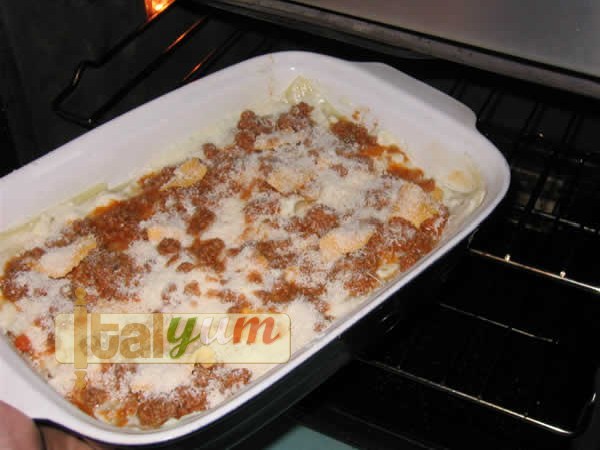
Nutrition
Calories: 650kcal
Tried this recipe?Let us know how it was!



